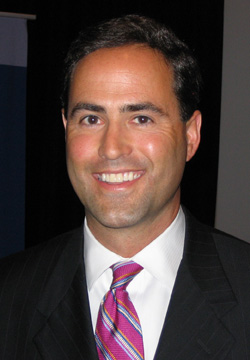
DETROIT – Auto consumers are borrowing more and lenders are showing a greater willingness to advance them money, two major signs the credit-driven auto industry is on the road to recovery.
Both car buyers and lenders today display “a greater credit appetite,” says Daniel Berce, president and CEO of General Motors Financial, a GM subsidiary that specializes in medium- to moderate-risk loans.
He contrasts the situation now to that of 2008 and 2009 when the finance industry crashed, making it hard and sometimes impossible for many consumers to get car loans unless they had sterling credit.
“Three years ago, many dealers were not able to get consumers financed,” particularly subprime customers, Berce tells the Automotive Press Assn. here. “Subprime really took a hit.”
When the credit crisis occurred, he headed AmeriCredit, an independent subprime lender. Its loan originations went from $9 billion in 2007 to $1 billion nine months later.
In an effort to reach more subprime borrowers, GM paid $3.5 billion in cash last year for AmeriCredit, renaming it GM Financial.
“With a GM pipeline, our lending has increased, but we were able to preserve much of our non-GM business, which was very important to us,” Berce says.
He tells Ward’s GM Financial has “a $10 billion balance sheet – and growing.”

Before the acquisition, GM’s subprime lending penetration was 4%. Now it is 6%, compared to an industry average of 5%, Berce says. “Before the credit crisis, subprime lending was in the double digits. There is a lot of room for growth.”
Prime lenders are plentiful. “Prime customers are well served,” he says. “There still is a lack of subprime in the market, so we serve a real purpose.”
Berce describes the current auto-financing environment as healthy, pointing to increased competition, strong securitization and capital markets “as good as I’ve seen in 20 years.”
Good economic-recovery signs include a drop in loan delinquencies and defaults, largely because the job market is stronger, even though unemployment remains stubbornly high at about a 9% national rate.
“People who lose their jobs are much less likely to pay their car loans,” Bierce says. “That’s just the way it is.”
Losses on loans during the recession reached about 16 cents on the dollar. That has decreased to 5 cents on existing loans. “It shows how far credit has improved,” Berce says.
The thawing of the credit freeze is aiding vehicle sales, says Gary Allgeier, director-financial services for the Suburban Collection, a dealership group with stores in Michigan and Florida.

“No credit equals no sale,” he says, recalling the recent ice age of lending. “That’s where it all stopped.”
Bad mortgage lending, not bad auto financing, triggered the credit crisis, Berce says. “Auto securitizations were well structured but mortgages, of course, were a disaster.”
The mortgage meltdown caused “a down draft,” then a “fire sale on securities. No one wanted to buy them or finance a new deal.”
Although Suburban didn’t suffer as much as some dealers and worked with “preferred lenders” to finance customers, “we experienced a punch in the gut,” Allgeier says. “Now, we have hungry lenders whose windows are open.”
But some things have changed, including lenders wanting downpayments or what Allgeier calls “vehicle investments,” from consumers. “Ads now refer to $3,000 to $4,000 down. Before, it was no money down.”
Most car buyers today seem more educated, know their credit scores and take out loans with shorter pay-back terms, he says. “We also see more responsible vehicle selection. We’re not seeing the teen show up at the dealership looking for a Cadillac Escalade.”




